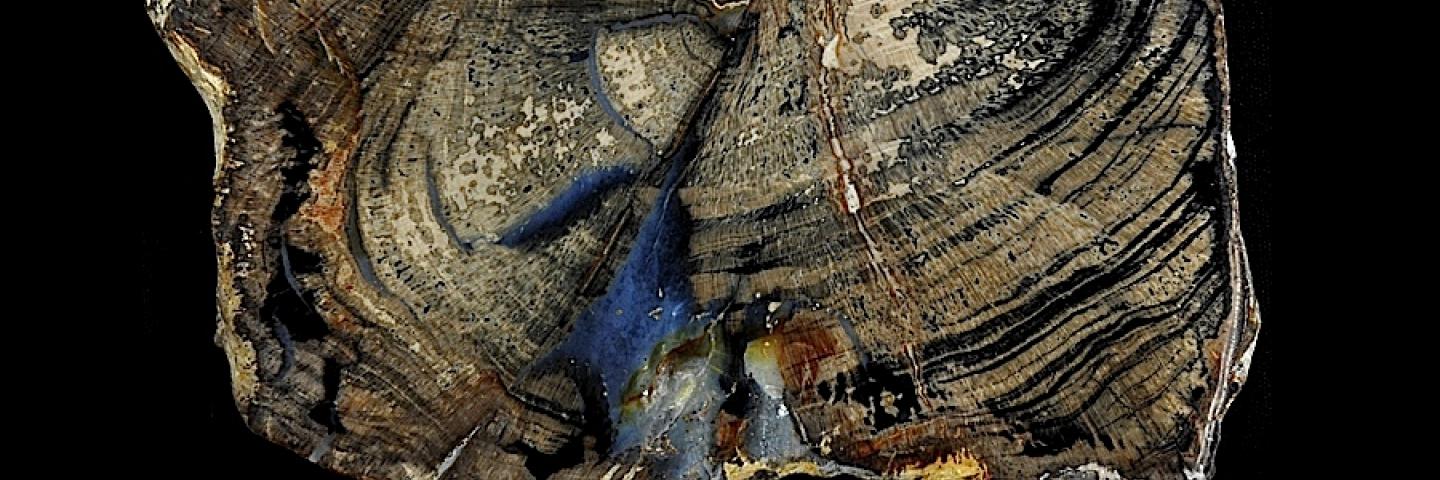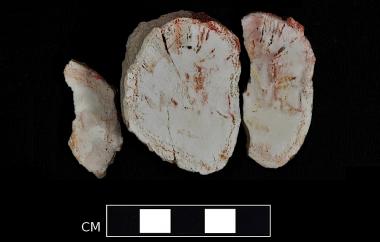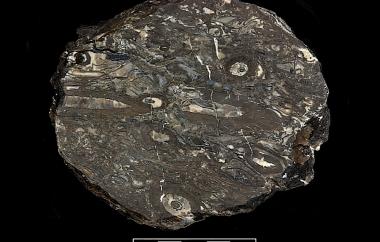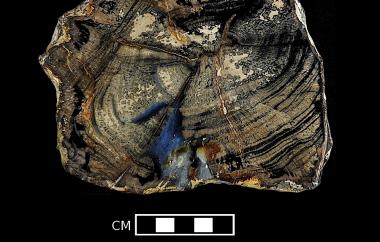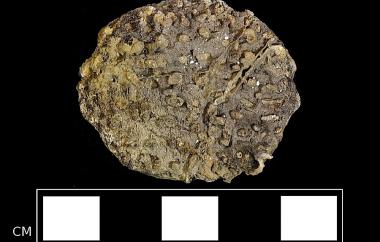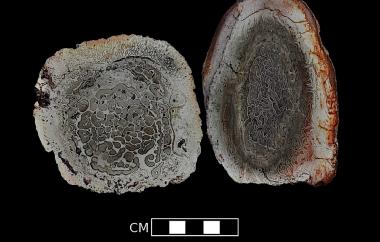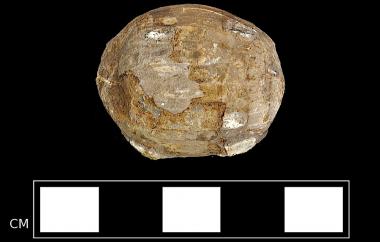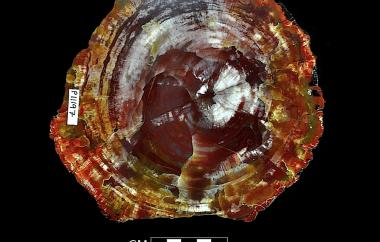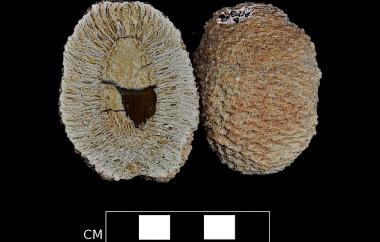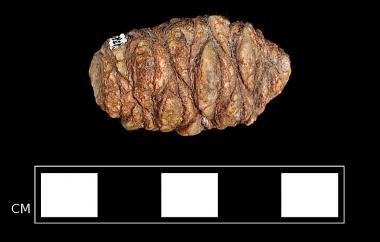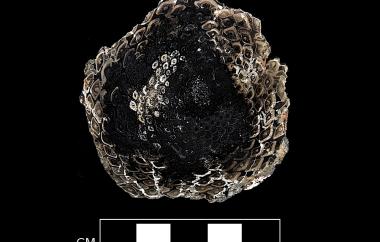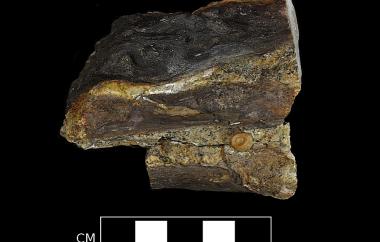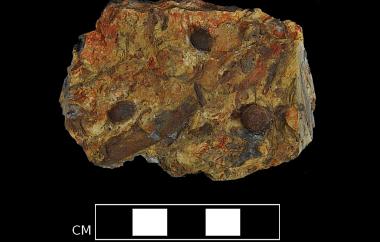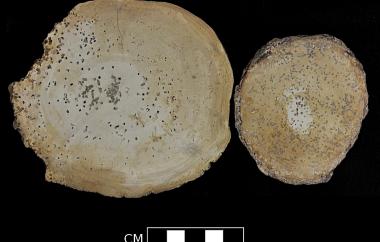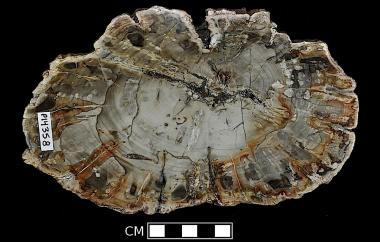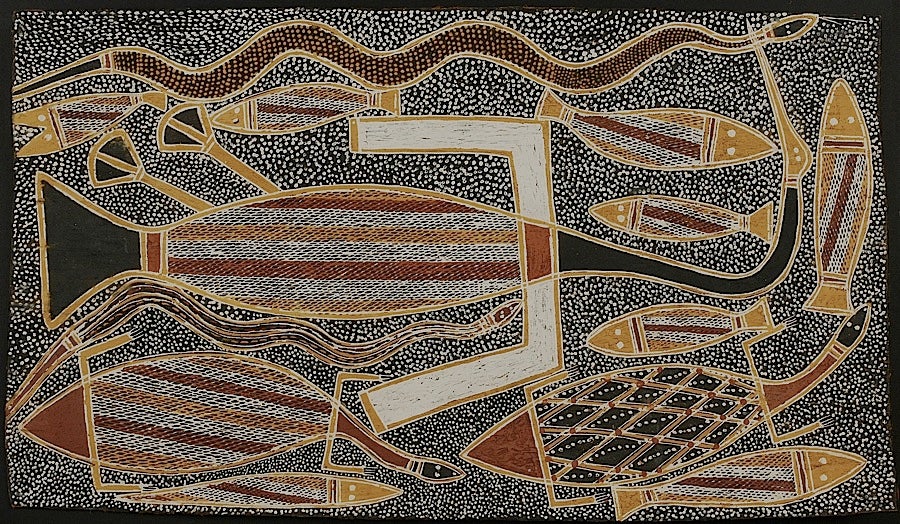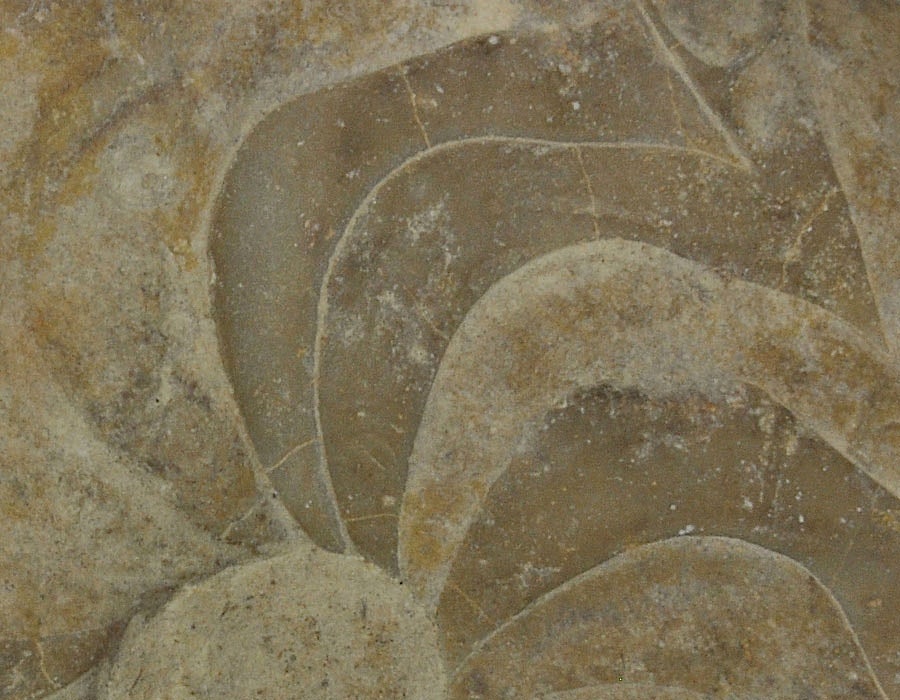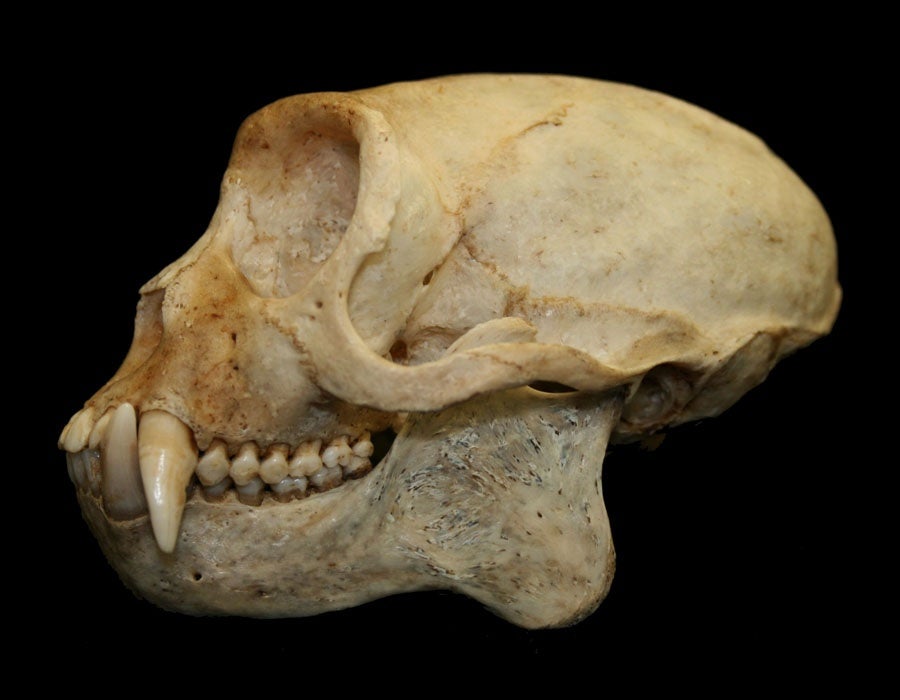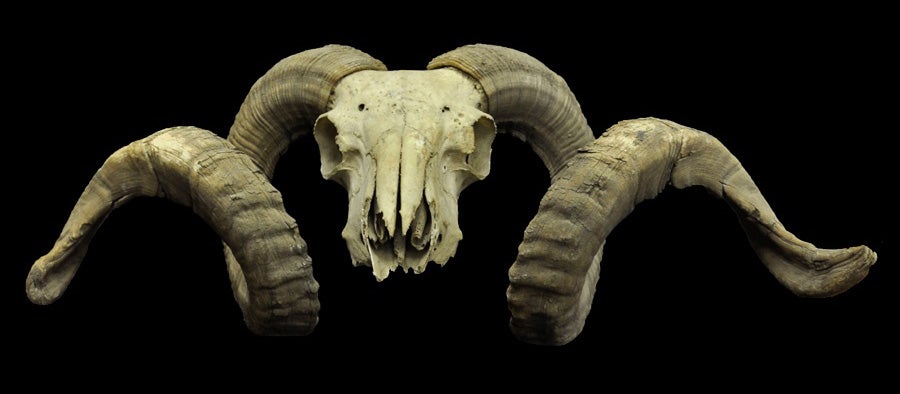Fossil plants preserved in detail by mineral infiltration are especially valued by paleobotanists because they preserve details of uncompacted form and cellular detail not found in plant impressions and compressions. The most informative kind of fossil is permineralization, in which the minerals fill cell cavities and conserve the original cell walls of the plant. Less useful are remains that are petrified, literally turned into stone, because even the cell walls are replaced by mineral. In Oregon, permineralized and petrified wood is generally preserved by silica derived from the alteration of volcanic rocks. In Ohio through Iowa another form of permineralized plant is found within coal seams, preserved by calcite in nodules colloquially called "coal balls". In black shales, plant material is permineralized by pyrite, again with preservation of microscopic details. These specimens were collected by Professor Retallack during his career as a paleobotanist.
Images © UO Museum of Natural and Cultural History. Production of this gallery was generously supported by The Ford Family Foundation.
Conifer stem preserved by opal permineralization
Agathis sp.
White Cliffs, New South Wales, Bulldog Shale, Early Cretaceous (Aptian) - Specimen #P1494
Palm nut permineralized in pyrite
Nypa burtini
Isle of Sheppey, England, London Clay
Early Eocene (Ypresian) - Specimen #P8149
Palm nut permineralized in pyrite
Nypa burtini
Isle of Sheppey, England, London Clay,
Early Eocene (Ypresian) - Specimen #P8149
Progymnosperm trunk permineralized in silica
Callixylon whiteanum
Ada, Oklahoma, Woodford Shale,
Late Devonian (Famennian) - Specimen #P8571
Icacina vine fruit stone permineralized in silica
Palaeophytocrene foveolata
Clarno, Oregon, Clarno Nut Beds,
Middle Eocene (Lutetian) - Specimen #P9381
Tree fern trunk permineralized in silica
Psaronius brasiliensis
Jaboty, Brazil, Pedra de Fogo Formation,
Early Permian (Artinskian) - Specimen #P10542
Hazel nut permineralized in silica
Coryloides hancocki
Clarno, Oregon, Clarno Nut Beds,
Middle Eocene (Lutetian) - Specimen #P10978
Conifer trunk petrified by agate
Araucarioxylon arizonicum
St. Johns, Arizona, Chinle Formation,
Late Triassic (Norian) - Specimen #P11197
Conifer cone permineralized in silica
Araucaria mirabilis
Cerro Quadrado, Argentina, Serie Bahia Laura,
Middle Jurassic (Bajocian) - Specimen #P11522
Conifer cone permineralized in silica
Pararaucaria patagonica
Cerro Quadrado, Argentina, Serie Bahia Laura,
Middle Jurassic (Bajocian) - Specimen #P12416
Tree fern apex permineralized by silica
Palaeosmunda playfordi
Blackwater, Queesnland, Blackwater Formation,
Late Permian (Changsingian) - Specimen #P12819
Banana seed permineralized in silica
Ensete oregonense
Clarno, Oregon, Clarno Nut Beds,
Middle Eocene (Lutetian) - Specimen #P14047
Icacina vine fruit stone permineralized in silica
Iodicarpa ampla
Clarno, Oregon, Clarno Nut Beds,
Middle Eocene (Lutetian) - Specimen #P14048
Oak wood with unusual halite crystal casts permineralized in silica
Quercus sp.
Sweet Home, Oregon, Little Butte Volcanics,
Early Oligocene (Chattian) - Specimen #P14355
Corystosperm trunk permineralized in silica
Rhexoxylon africanum
Bobasatrana, Madagascar, Upper Sakamena Group,
Early Triassic (Spathian) - Specimen #P14358
